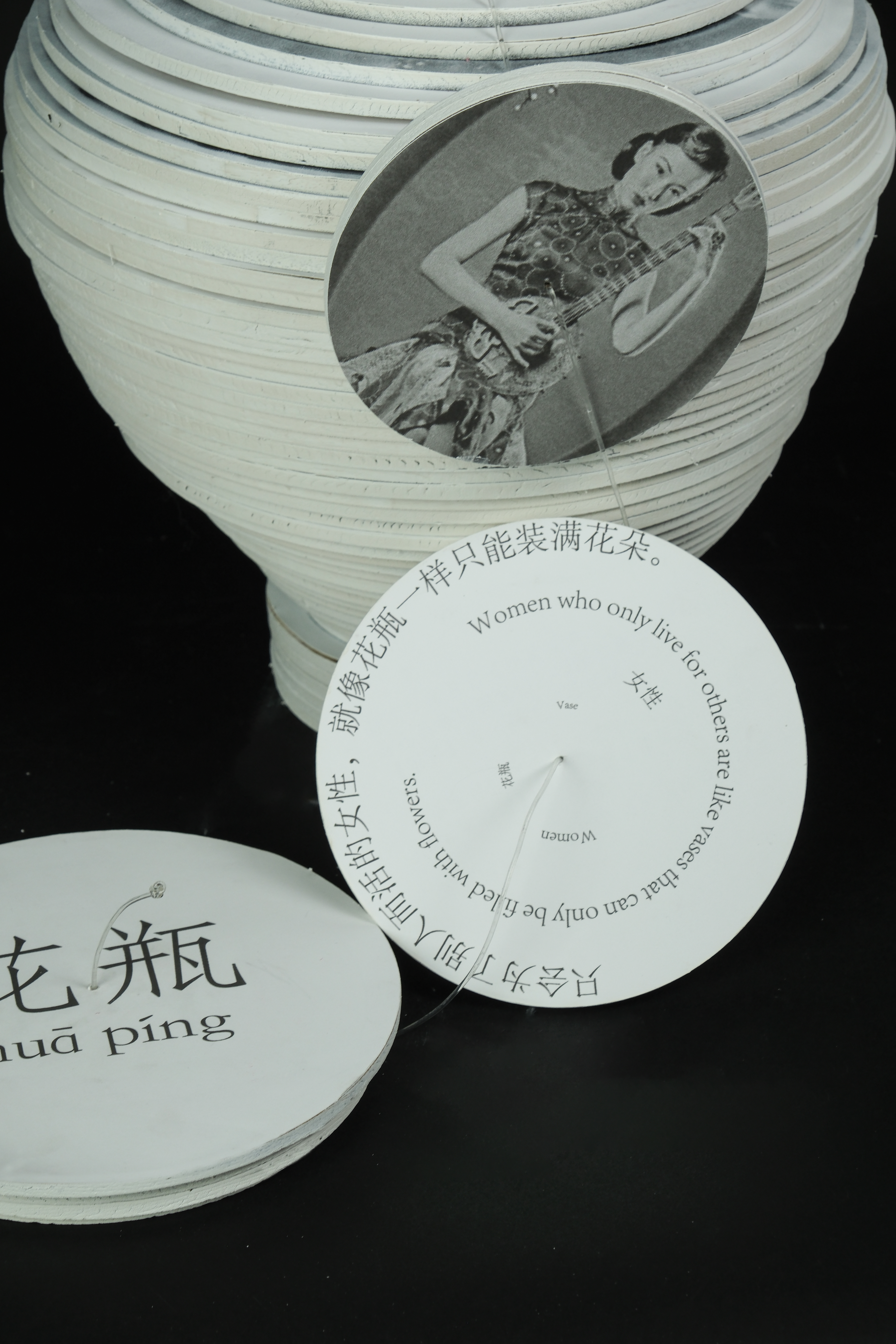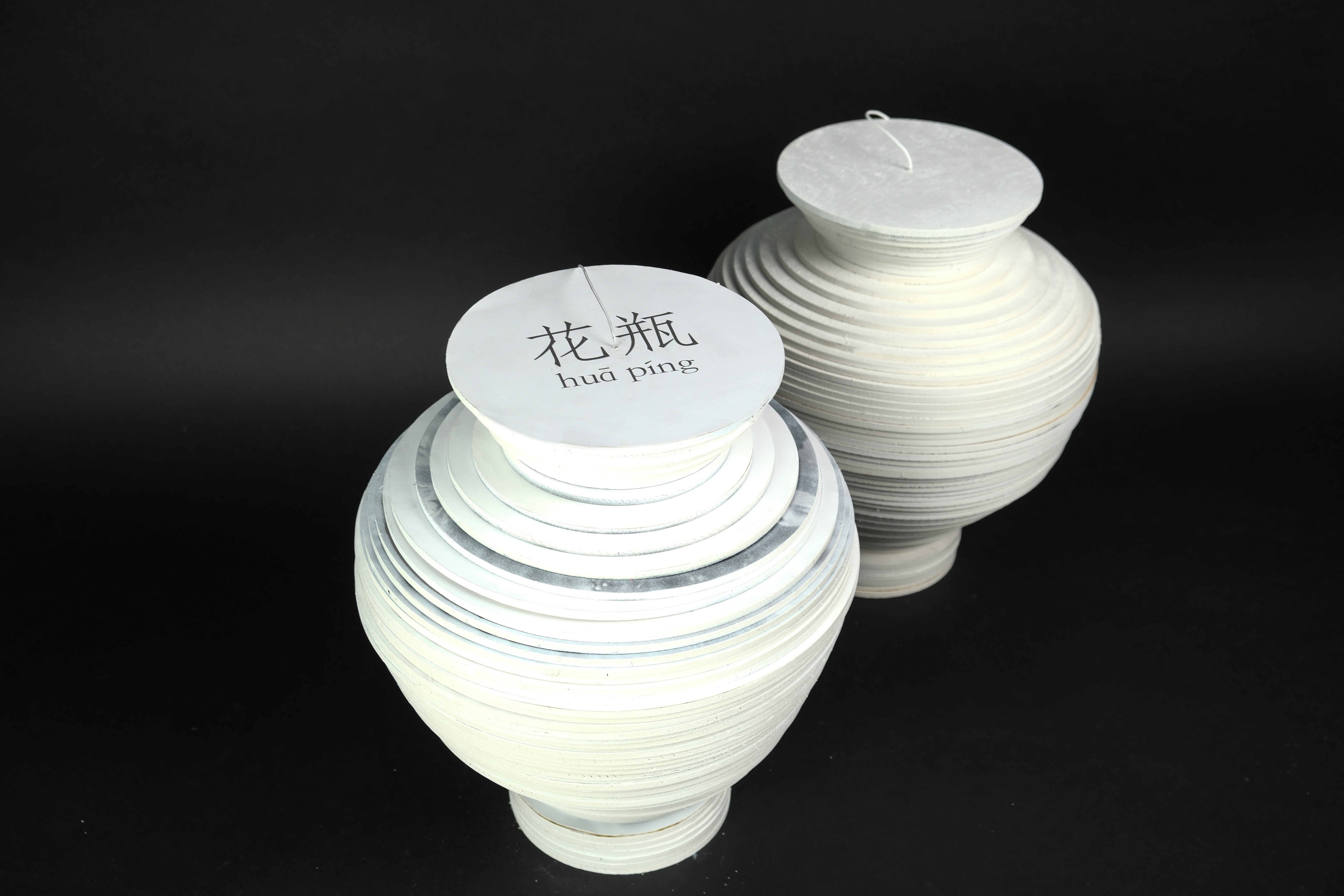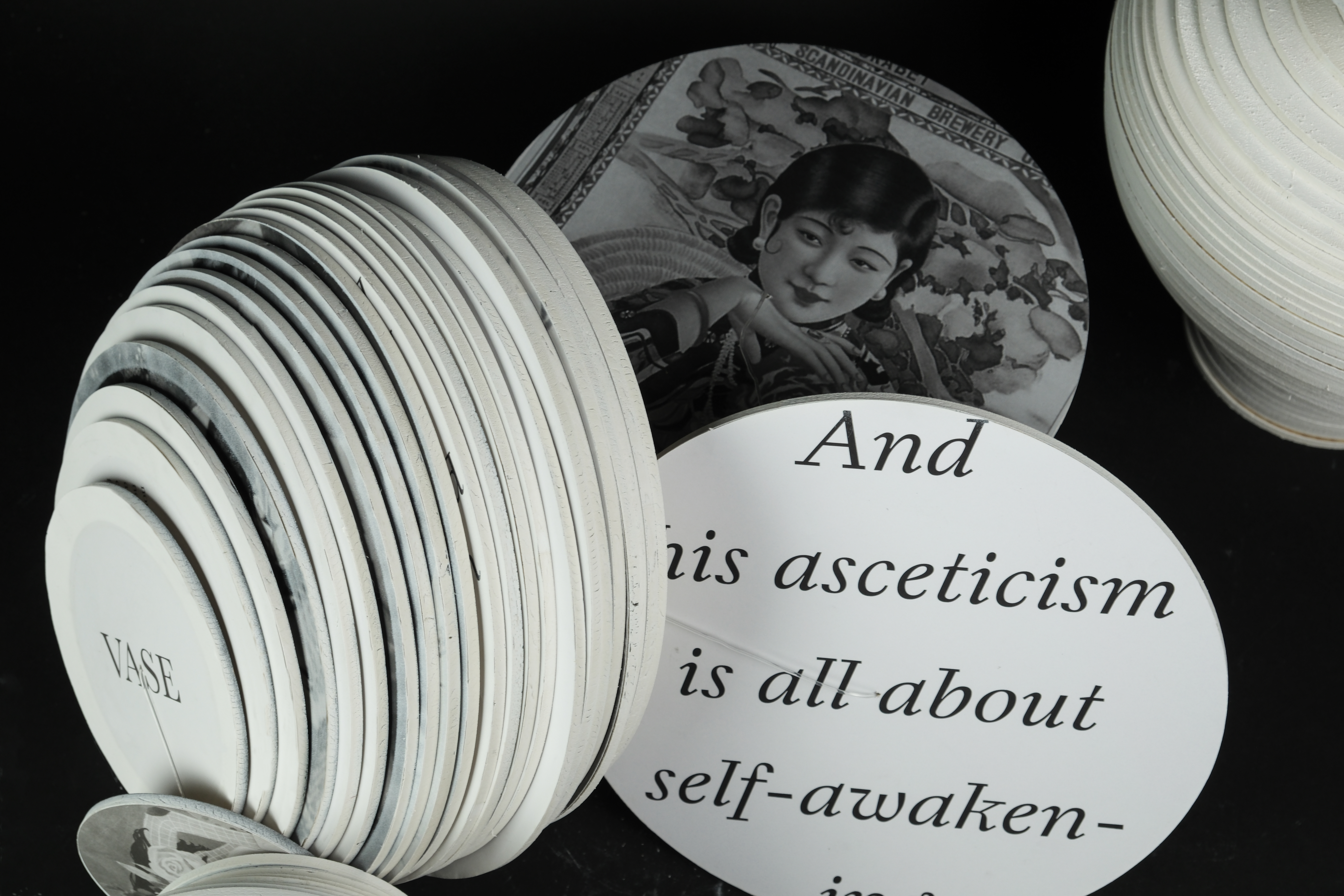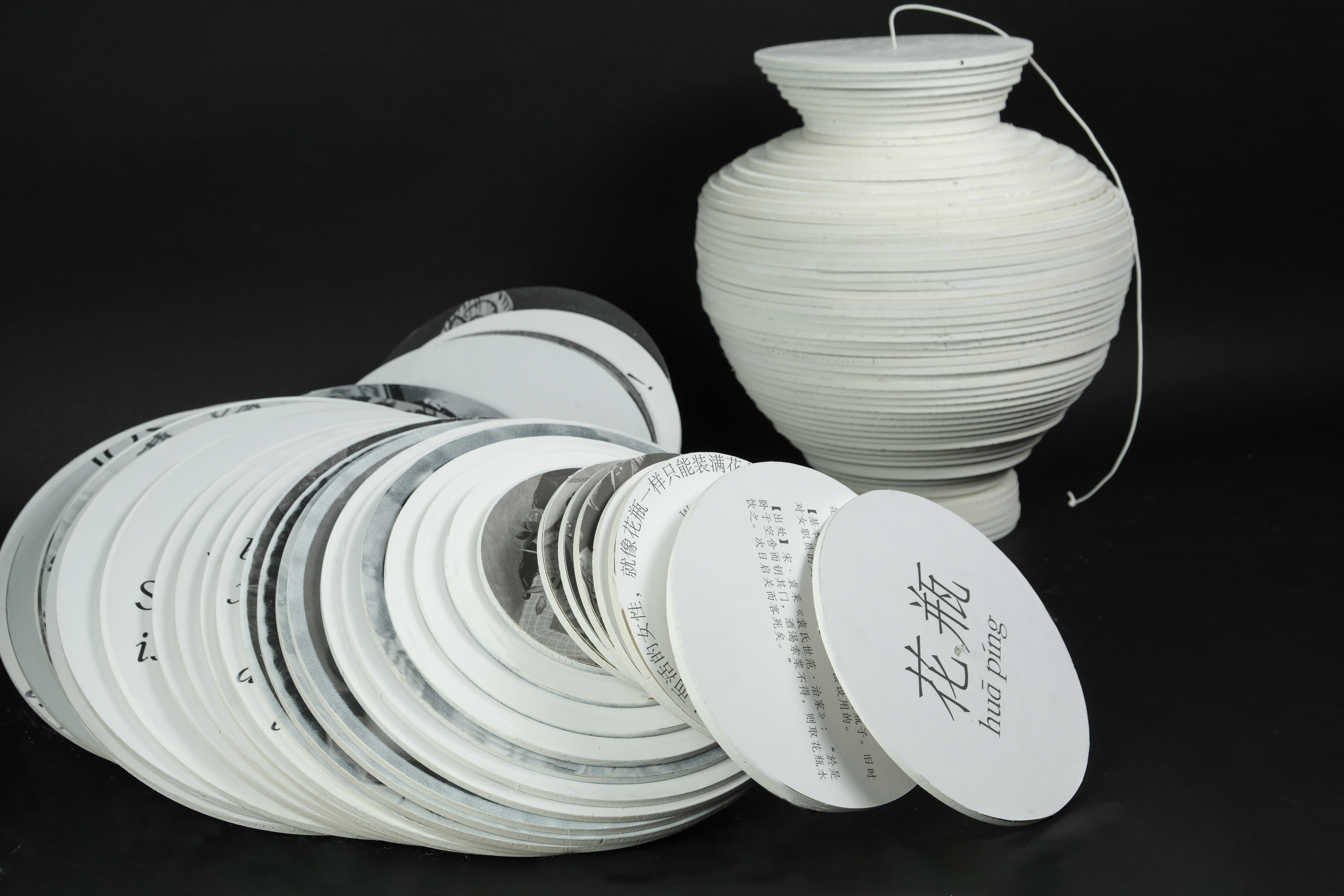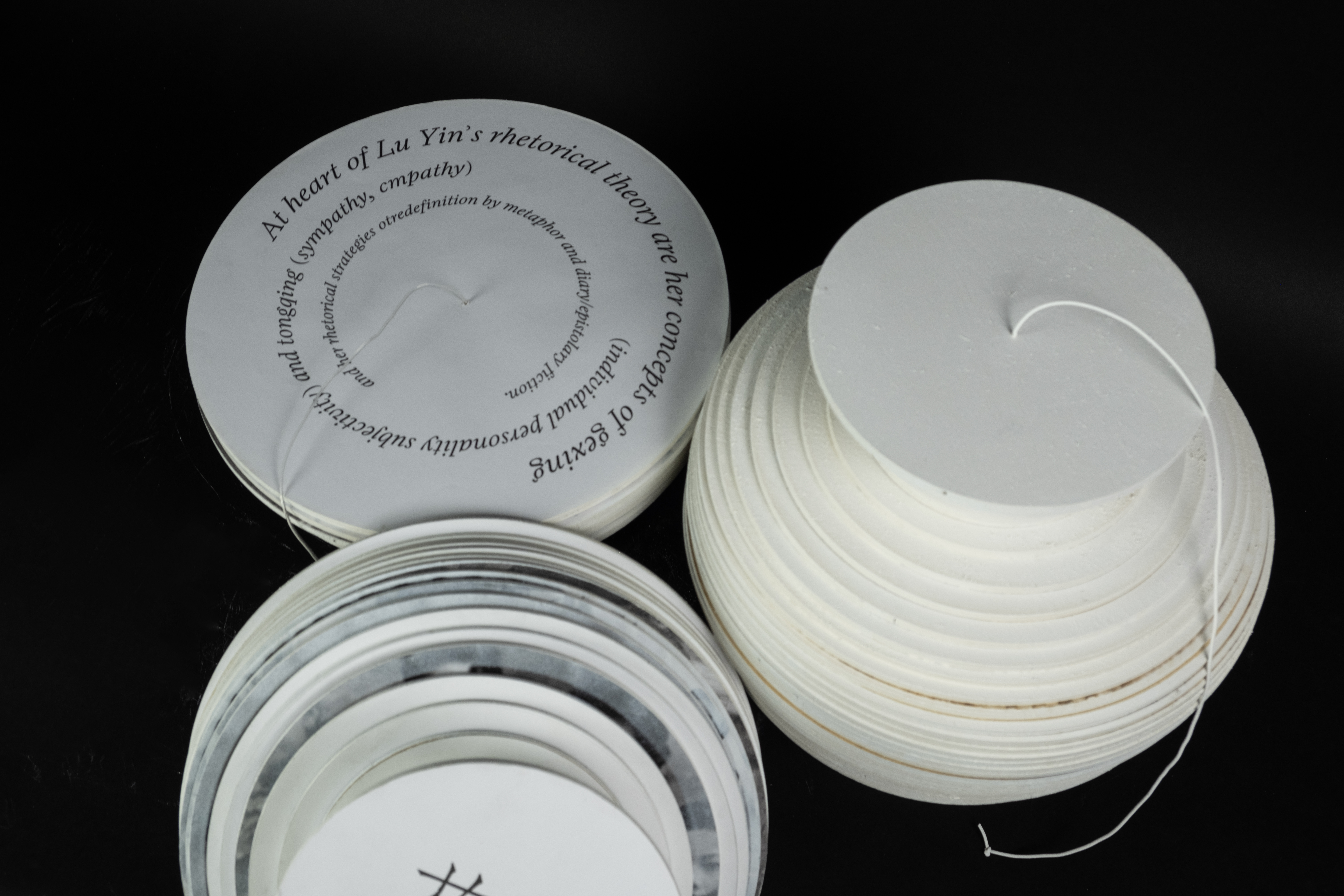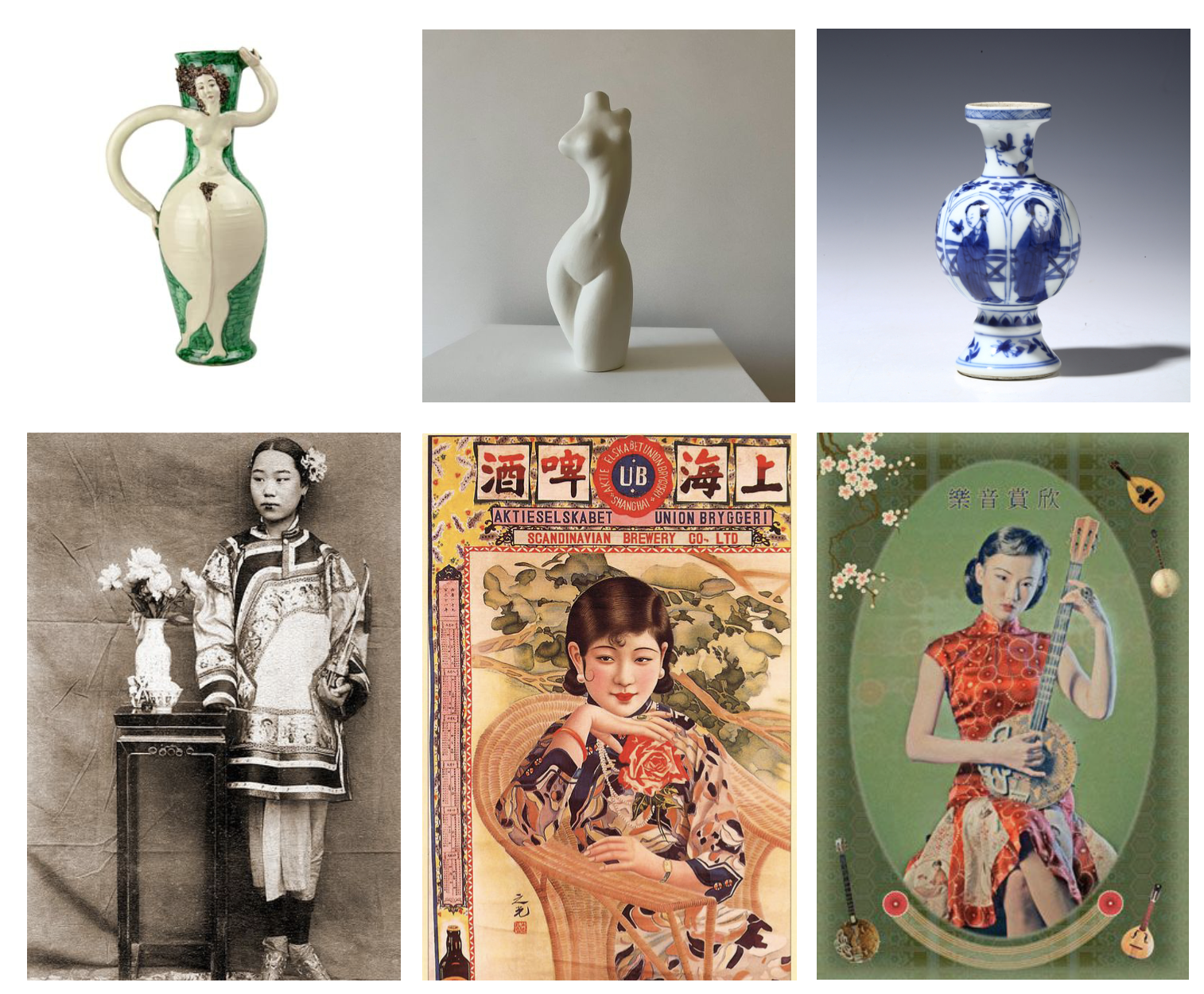Book of VASE
/
"The Book of VASE" is an artist book, a 15-inch tall vase using wood as the medium that allows for both strength and intricate detailing. This creation is not just a vase but a narrative canvas related to Chinese feminism. Each wooden segment, uniformly sliced, represents the layers of a vase's structure and history. I have intricately etched quotes from Lu Yin's essay "The Age of the Vase" onto each piece, intertwining the evolution of Chinese feminism with the symbolism of the vase. This artwork reflects the multifaceted portrayal of women in contemporary Chinese society, drawing inspiration from historical elements such as 70s and 80s Chinese posters and the poignant legacy of foot-binding culture.
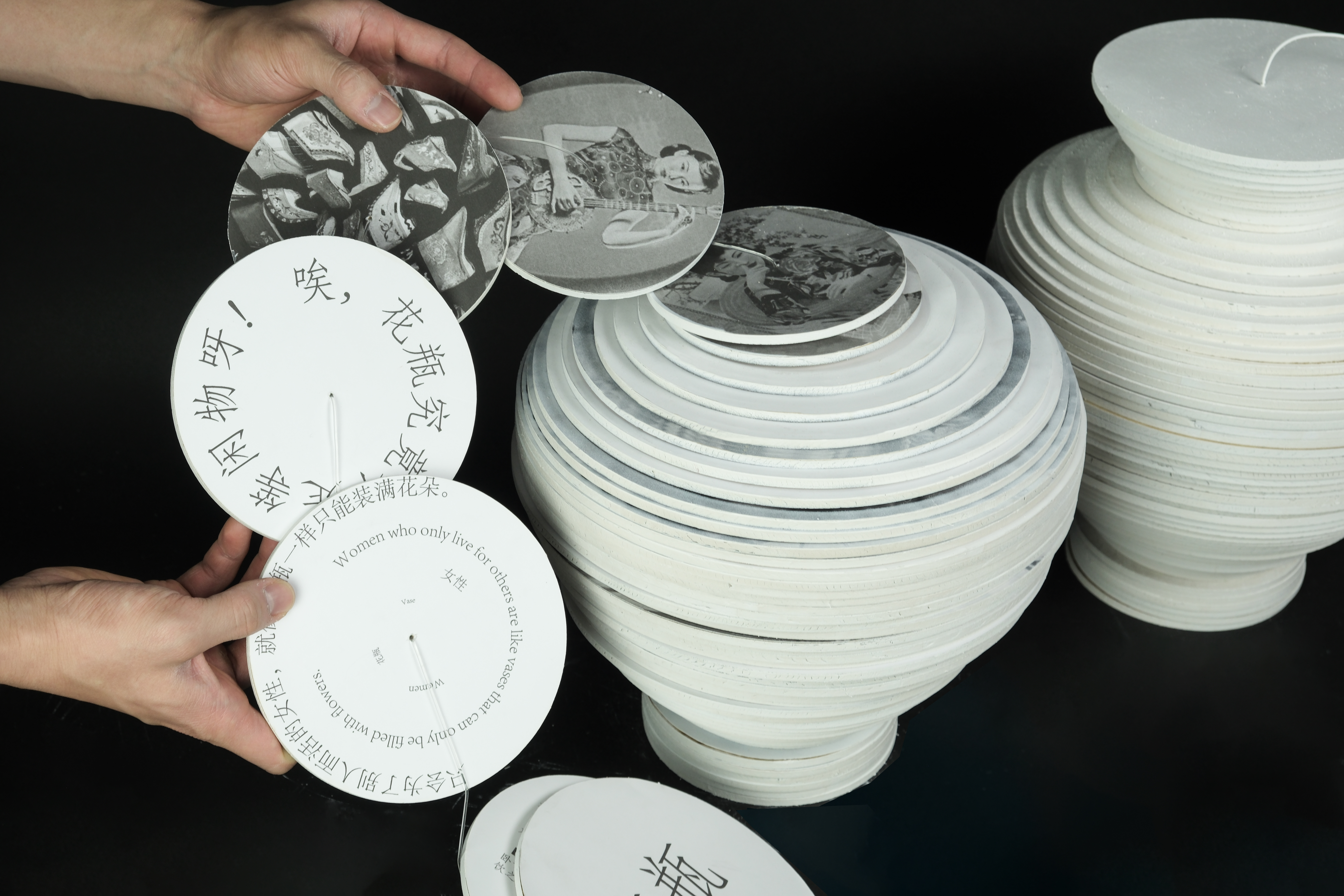
Artist Book
11.2'' x 11.2'' x 15''
2023
Chinese Feminism and Lu Yin
Lu Yin (1898–1934) was a Chinese feminist writer of the 20th-century. Her extensive body of work includes novels, short story collections and essays that explore the lives and hardships of Chinese women in the 20th century. Lu Yin is often associated with the May Fourth movement due to her support and espousing of its ideals during her academic career and its influences that are found in her literary works. During her writing career Lu Yin advocated for women's liberation through education and wrote many critical essays on what the steps to women's emancipation in China should look like. Due to the content of her work often reflecting feminist theory and her May Fourth movement involvement, Lu Yin is cited as a prominent figure in both the canon of May Fourth writers and notable women writers of China.
“VASE”
Vases, which are open containers, are meant to hold flowers, but there are some vases that are only used as decorations and will not be filled with flowers. In its Chinese derivation and in contemporary Chinese society, vase is a derogatory term for someone who has no appearance but does nothing. This is due to the fact that a vase is only used as a flower arrangement, an accompaniment, a decorative container, and has little practical use. The word is often used to describe a woman who is beautiful on the outside, but whose mind is empty and lacks sufficient intelligence and ability.
As a whole, it is limited by a secular, one-sided stereotype that stems from the human heart's distrust of appearances, and the inability to associate their knowledge and ability with their appearance. Hence, it is often necessary to wait for them to grow older, to learn to show a strong side or to prove their abilities before this image can be improved.
![]()
Book Inside Display

![]()
![]()
Outside Display

